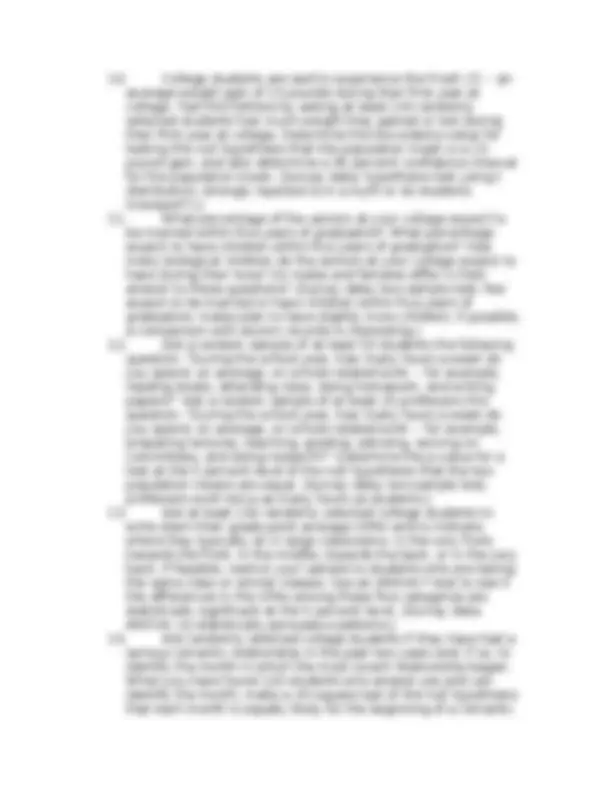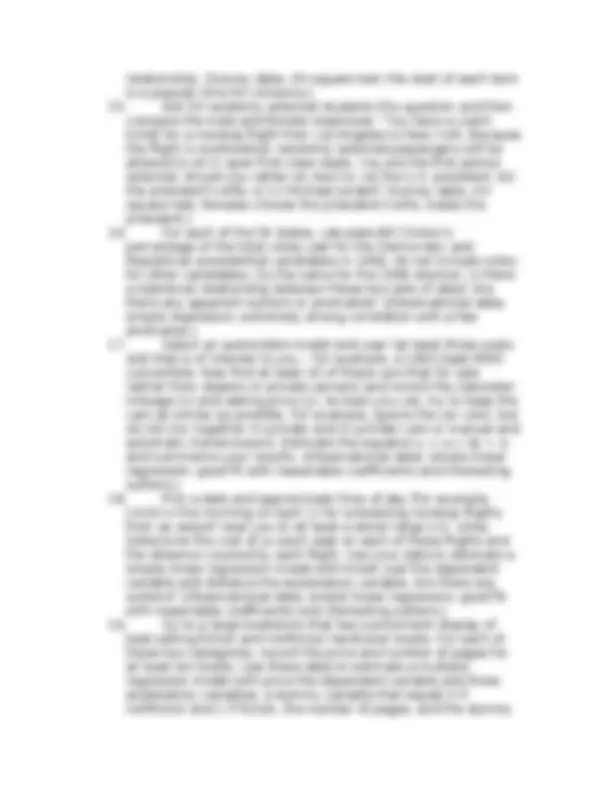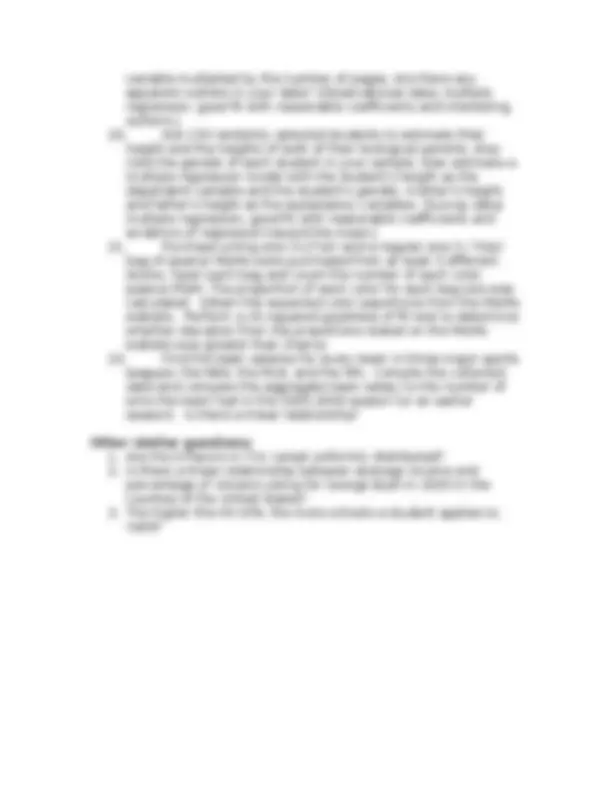





Study with the several resources on Docsity

Earn points by helping other students or get them with a premium plan


Prepare for your exams
Study with the several resources on Docsity

Earn points to download
Earn points by helping other students or get them with a premium plan
Community
Ask the community for help and clear up your study doubts
Discover the best universities in your country according to Docsity users
Free resources
Download our free guides on studying techniques, anxiety management strategies, and thesis advice from Docsity tutors
Various data analysis projects, including comparing sugar content in cereals by shelf location using boxplots, estimating student sleep patterns through surveys, and testing brand preferences in taste tests. Other projects involve analyzing words per sentence in magazines, conducting a taste test for cola brands, and investigating gender differences in height and expectations for children.
Typology: Study Guides, Projects, Research
1 / 5

This page cannot be seen from the preview
Don't miss anything!




Math 308 Spring 2009 Project Ideas Project Group : 4 people. You may choose. I will create 4-student groups by random selection if your group is smaller than 4 students. Ideas : Note that emphasis is on the analysis and the presentation. Do not make your experiment too demanding!
who identify themselves beforehand as cola drinkers with a definite preference for one of the brands you are testing. Give each subject a cup of each cola that has been coded in a way known only to you. Calculate the fraction of your sample whose choice in the taste test matches the brand identified beforehand as their favorite. (Do not tell your subjects that this is a test of their ability to identify their favorite brand; tell them it is a test of which tastes better.) Determine the two-sided p-value for a test of the null hypothesis that there is a 0.5 probability that a cola drinker will choose his or her favorite brand. [Experimental data; hypothesis test using binomial model; most students prefer Coke, but neither group is very successful at identifying its favorite.]
relationship. [Survey data; chi-square test; the start of each term is a popular time for romance.]
variable multiplied by the number of pages. Are there any apparent outliers in your data? [Observational data; multiple regression; good fit with reasonable coefficients and interesting outliers.]